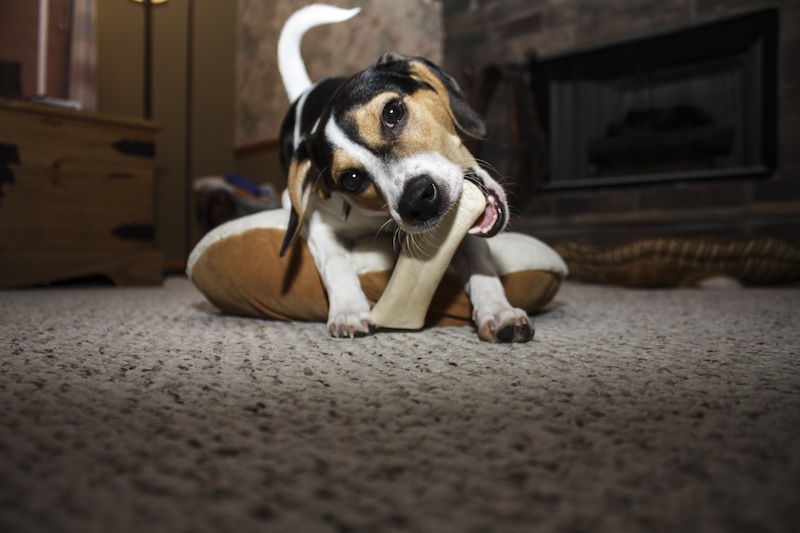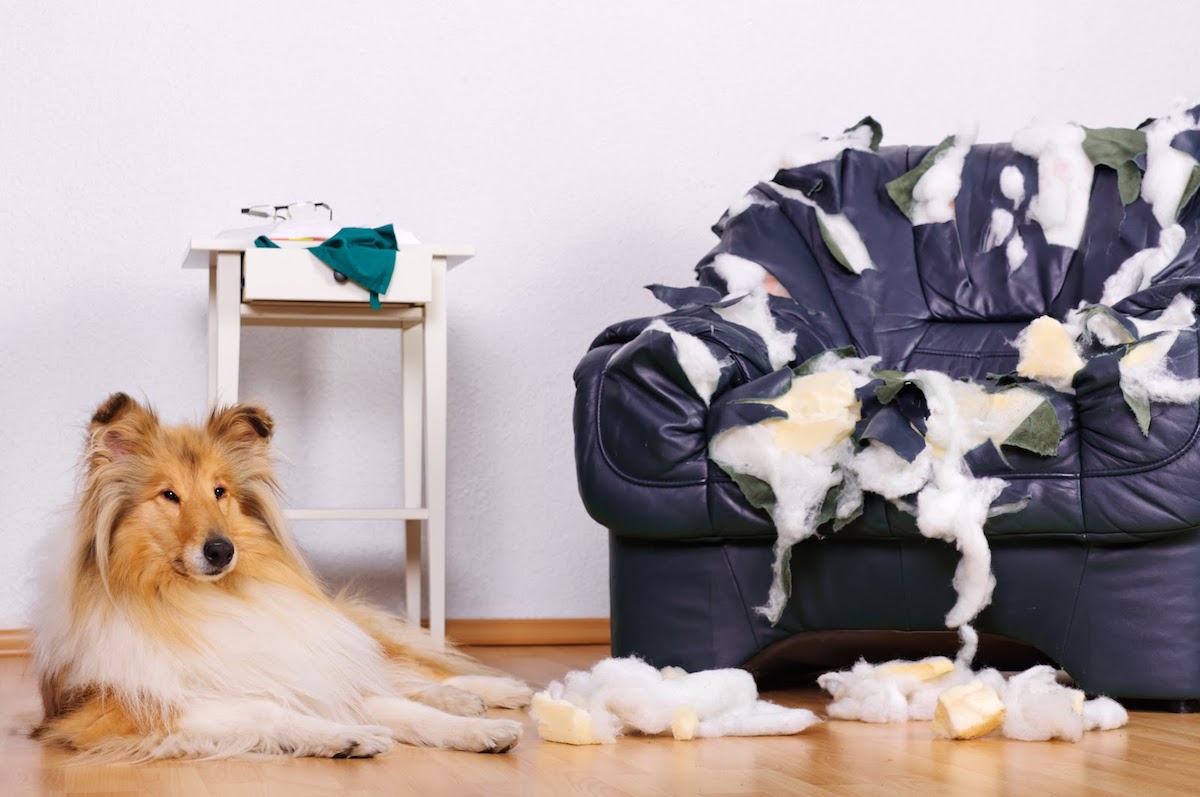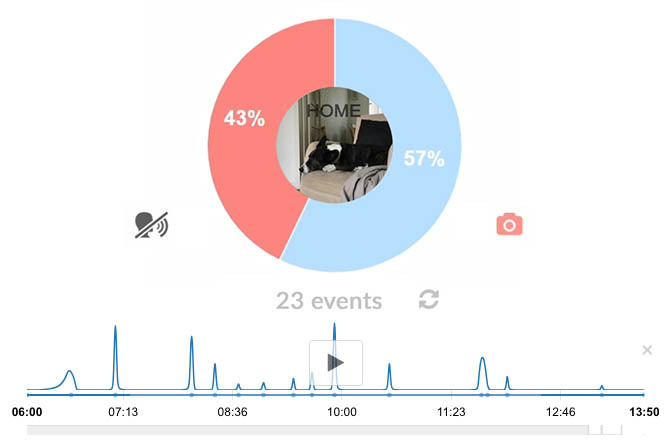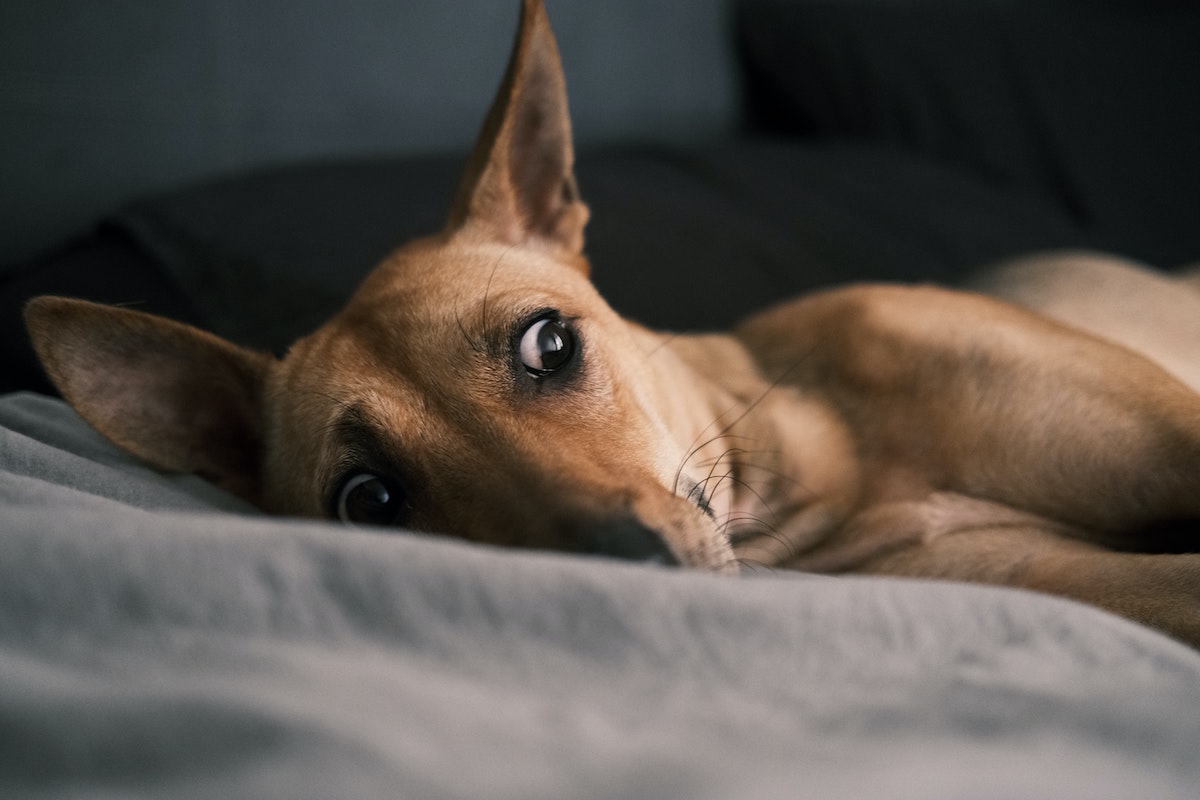Have you ever had to replace shoes, clothes, or furniture because of your dog's antics? Maybe you've repaired scratched doors and walls or cleaned up messes on the floor far too often. Do you leave the house already anxious about what your furry friend might destroy next?
Separation-related problems, and specifically separation anxiety, can cause dogs to wreak havoc on homes and belongings, and lead to indoor potty incidents. Why does this behavior occur, and what can be done about it?

Understanding the Reasons Behind Destructive Dog Behavior
Destruction of items by their dog while home alone can be one of the earliest signs of separation anxiety for owners. Chewing on objects, damaging doors, and gnawing at window sills are common issues for dogs experiencing separation anxiety. Dogs typically go after entryways, exits, and objects that are infused with their owner's scent or hold a strong association with their owners. This can become quite costly for pet parents.
If the problem is separation anxiety, some dogs may go to great lengths to reach their owner, such as attempting to break through doors or windows. While physical activity might help alleviate their anxiety, it often leads to damage to their surroundings. Carrying and tearing at their owner's clothing can also be a way for dogs to relieve stress.
During periods of being left alone, a dog may have accidents indoors, like urinating on the bed, even if they can typically hold it for several hours. This may result from heightened anxiety and increased metabolism due to pacing and moving around. Panting and thirst can also lead the dog to drink more water. If your dog struggles with housebreaking, it's essential to have their health evaluated.
A dog causing damage may also simply be bored and inventing activities to pass the time. Puppies and young dogs, in particular, tend to explore the world with their teeth and alleviate itchy gums by chewing. You can find helpful tips on puppy training for being alone here.

How to prevent destruction of the apartment?
It's essential not to get angry at your dog, even when you come home to unwelcome surprises. Studies show that scolding your dog can actually increase their anxiety. If anxiety is the root cause of your dog's behavior when left alone, punishment can create a difficult situation. The anxiety that originally caused the problem continues in a vicious cycle, and eventually, the dog may even start to fear the owner's return home. Dog becomes even more anxious when they anticipate their owner coming home upset. What humans perceive as a guilty expression in dogs are actually strong stress signals in response to scolding or an owner's demeanor. Dogs can also learn to recognize the scent of a nervous human. Since the canine brain is less complex than the human brain, dogs reason very differently. They do not understand the concepts of right and wrong as humans do, but rather learn which behaviors are acceptable in the presence of their owner.
First, ensure your dog has ample opportunities for species and breed-appropriate behavior. Slow feeding is a great example: serve all your dog's food in a way that allows them to sniff, chew, tear, and dig with permission. If being left alone stresses your dog, try to reduce their overall stress factors, allowing them time to recover. If your dog seems full of energy and no amount of activity is enough, teach them relaxation and calmness as a counterbalance.
To minimize destruction, arrange your living space so that your dog doesn't have access to anything valuable. You might even consider leaving some clothes for your dog to carry and sleep on with permission. If your dog consistently destroys objects, evaluate their well-being factors in their everyday life: do they have enough suitable stimuli, exercise, and social connections to be balanced? You can try increasing enrichment in your dog's daily life and observe how this affects their behavior when left alone over a couple of weeks. You can also leave appropriate chew toys for your dog while they're alone, but be aware that this might teach them not to rest during alone time – but to remain active!
Limiting your dog's space, for example with a gate, can be an effective solution for some dogs. However, it's important to acclimate your dog to being behind the gate in everyday life so that they feel safe and can relax in that area. It is crucial that the front door is not the only barrier separating your dog from you, and that they first learn to be apart from you using the gate. Start the training when you are at home, on the opposite side of the gate from your dog. When restricting space, ensure it is not so small that it prevents your dog from changing their sleeping spot far enough away from the previous one, as dogs typically need to switch sleeping locations every hour. The aim of the confined area is not to inhibit your dog's activities, but to substitute the prior negative routine with a new one by altering the space. Keep in mind that confining a dog in a crate can be extremely detrimental to their mental and physical health, and it is prohibited by some animal welfare laws. You should also avoid leaving your dog alone at home wearing a muzzle. If your dog is at risk of injuring themselves while alone, it may be necessary to considering other options instead of leaving them unattended.
For more detailed instructions on practicing alone time, refer to our information package on Separation Anxiety in Dogs and Other Problems with Being Alone. If you suspect your dog may have injured themselves while alone, check their nails, paws, and teeth for any injuries, and contact a veterinarian if necessary.
With Digital Dogsitter, you can monitor how your dog behaves when they're alone. Does your dog appear to tear and break things to entertain themselves around the apartment, or are they restless and anxious, focusing their destruction on escape attempts? Digital Dogsitter is here to help with diagnosing, monitoring, and treating the issue of being alone!
 Deutsch
Deutsch English
English Español
Español Français
Français Italiano
Italiano 日本語
日本語 Português
Português Suomi
Suomi Svenska
Svenska




